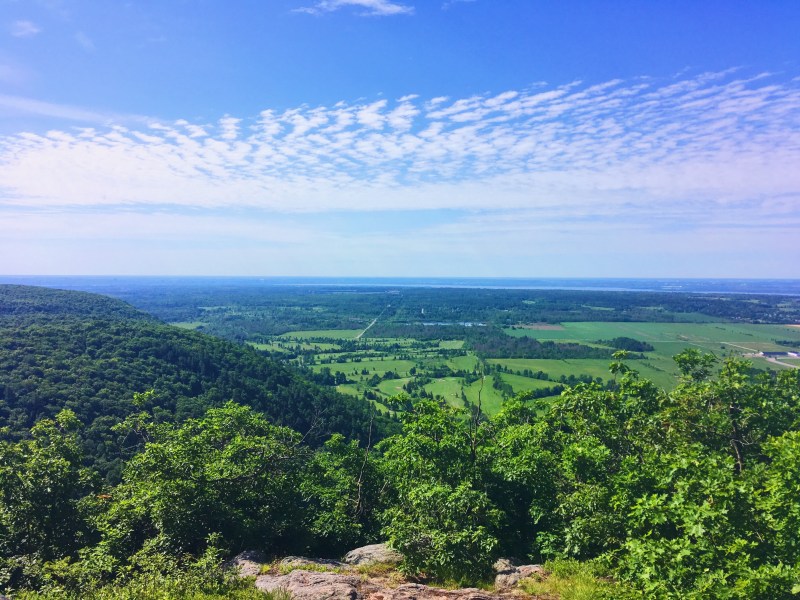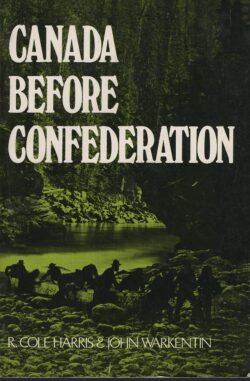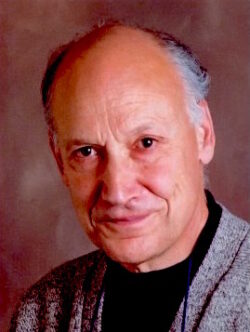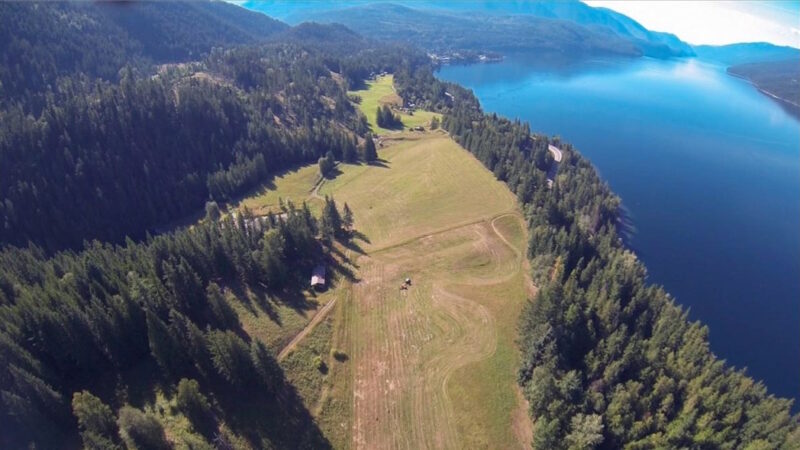1041 A country of bounded spaces
A Bounded Land: Reflections on Settler Colonialism in Canada
by Cole Harris
Vancouver: UBC Press, 2020
$39.95 / 9780774864411
Reviewed by Barry Gough
*
 Canada is usually described as an unbounded land, limited only by political borders with foreign states and physically by its seas and coasts. Here the distinguished historical geographer, Cole Harris, retired from the University of British Columbia, sees Canada as a country of bounded spaces – a nation with islands of agricultural potential situated between rock and cold in the north and a political boundary in the south. He sees Canada as one nation, when in fact it might be described as two nations, French and English-speaking, living in a situation of solitude from one another. In a vast space of such geographical, climatic and ethnic diversities at the time of contact by outsiders (some who came by force, others by peaceful penetration), the peoples of what became modern Canada came from an extraordinary range of settings: French traders from St Malo and Brittany, seigneurs and land holders, priests and other missionaries, Loyalist colonial Americans crossing the border, the English venturing down through Hudson Bay and upriver into the fur-bearing interior, the sea otter traders coming from India and Macao, Boston and England bringing commodities of the industrial age, including arms and ammunition, and taking away pelts readily supplied by Indigenes.
Canada is usually described as an unbounded land, limited only by political borders with foreign states and physically by its seas and coasts. Here the distinguished historical geographer, Cole Harris, retired from the University of British Columbia, sees Canada as a country of bounded spaces – a nation with islands of agricultural potential situated between rock and cold in the north and a political boundary in the south. He sees Canada as one nation, when in fact it might be described as two nations, French and English-speaking, living in a situation of solitude from one another. In a vast space of such geographical, climatic and ethnic diversities at the time of contact by outsiders (some who came by force, others by peaceful penetration), the peoples of what became modern Canada came from an extraordinary range of settings: French traders from St Malo and Brittany, seigneurs and land holders, priests and other missionaries, Loyalist colonial Americans crossing the border, the English venturing down through Hudson Bay and upriver into the fur-bearing interior, the sea otter traders coming from India and Macao, Boston and England bringing commodities of the industrial age, including arms and ammunition, and taking away pelts readily supplied by Indigenes.


War or the threat of war shaped the Canadian fact. That Quebec fell to British power and that the Americans were denied conquest in the War of the American Revolution and later the War of 1812 all developed in their own ways the concept of British North America, otherwise Canada. Somehow “manifest destiny” was checked, and the Kingdom of Canada, as W.L. Morton called it, came into existence. Donald Creighton called it the Dominion of the North, which surely it is. And Maurice Careless defined it as a place of limited identities somehow making up the whole patchwork of a country. Harold Innis, our greatest social scientist still, argued for the roles of the fur trade and the CPR in making a transcontinental nation and the binding of the whole by bands of steel and other modes of communication that brought economic and financial detail to political visioning and managerial expertise. Harris’s approach is different, focusing on the local or regional.
While these scholars were advancing these postulations, Vancouver and Kootenay-raised Cole Harris was studying with the formidable Andrew Hill Clark at the University of Wisconsin, Madison. This premier institution had given the world Frederick Jackson Turner and the frontier thesis. But it was Clark who trained many a budding historical geographer in how that branch of learning ought to be conducted. Clark knew a good deal about Prince Edward Island and South Island, New Zealand. He set Harris to work up aspects of Acadia, and from there Harris moved on to the St. Lawrence River valley and the seigneurial system.

Some of this work was incorporated in textbooks highly useful for professors and university students studying early Canadian history, such as Canada Before Confederation: A Study in Historical Geography (Oxford University Press, 1974, co-authored with John Warkentin). My own students in nineteenth century Ontario History found unique insights into the land, its qualities, its possibilities for occupation and extraction, and its promises and, more, resistance, for future development, development that could only be overcome by technology, road construction and bridge building, steam navigation, and above all railways.
We learned about religious and ethnic patterning of the Upper Canada landscape. Along the way my students learned why public houses were spaced a maximum of six miles apart from one another: six miles was the maximum oxen could haul a wagon before needing to stop for a drink of water. These small facts, and a vast compilation of same, plus their analysis and organization in written form, make up the essentials of a workaday Canada. One of Harris’s early tasks was to assess Mono Township, Ontario. This he did with his graduate students at the University of Toronto (he would return to UBC, where he had been an undergraduate, in 1971). Mono is rough terrain, where wheat yields are low, the soil poor, the fields broken by moraines and the fascinating Niagara Escarpment (now a protected reserve). The reproduction of his “The Settlement of Mono Township” (1974) in The Bounded Land is an example of the value of the reprinting Harris’s early scholarship. He also reprints his study on smallpox that first appeared in a scholarly journal before being reprinted in his The Resettlement of British Columbia (1997); this is a reassertion of a field heavily studied notably Jody Decker, Robert Boyd and others.

A Bounded Land brings new dimensions and reflections to the work of Cole Harris as a scholar. The themes turn on settlement, colonization, dispossession, re-settlement, and the concluding theme throws light on Indigenous displacement and theories of empire and decolonization. Thereby a modern touch is added to earlier postulations based on empirical research and the traditional preoccupations of historical geography. Canada is also a nation with a third major presence: Harris notes that at the time of Confederation, the constitutional fabric known as the British North America Act (1867) assigned aboriginal questions to the Dominion (now Government) of Canada. Through such explorations, Harris gives broader scope to the Canadian fact. In an age when micro-studies seem to have taken the stage, it is splendid to see a publisher willing to take on the reprinting and the reimagining of distinguished scholarship undertaken over the space of more than a half-century. Historical geography remains a branch of scholarship that demonstrates how hewers of wood and drawers of water go about their business, but in A Bounded Land the waters run deep and the vistas extend to the hills and beyond.

*

Barry Gough is Emeritus Professor of History, Wilfrid Laurier University, Waterloo, Ontario. Since 2004 he has lived in his childhood Victoria home. A passionate advocate of Canadian history, his teaching fields have embraced Canadian history, national, thematic and regional, First Nations studies, ethnohistory, and constitutional affairs. His knowledge of British Columbia colonial affairs led to an invitation to compile the historical report for the Nuu-Chah-Nulth Tribal Council in the famed Meares Island Case. Familiarity with law of the seas led to providing legal advice in the State of Alaska Inland Waters case. He is a Past Hon. President, British Columbia Historical Federation, and in an executive capacity led the move to support an endowment for initiatory research grants in British Columbia history, now in its third year. His books have received numerous prizes, including the Lieutenant Governor’s Medal for Gunboat Frontier, 1984, and the Mountbatten Prize of the British Maritime Foundation for Pax Britannica: Ruling the Waves and Keeping the Peace before Armageddon, 2017. He is biographer of Sir Alexander Mackenzie, Peter Pond and Juan de Fuca. He is completing a biography of the enigmatic first governor of the Colony of Vancouver Island, Richard Blanshard. He has endowed several undergraduate scholarships in History, Political Science, and English at the University of Victoria. Editor’s note: See here for James Wood’s review of Barry Gough’s Churchill and Fisher: The Titans at the Admiralty who fought the First World War (Lorimer, 2017), and here for Howard Stewart’s review of Britannia’s Navy on the West Coast of North America, 1812-1914 (Heritage House, 2016).
*
The Ormsby Review. More Books. More Reviews. More Often.
Publisher and Editor: Richard Mackie
The Ormsby Review is a journal service for in-depth coverage of B.C. books and authors. The Advisory Board consists of Jean Barman, Robin Fisher, Cole Harris, Wade Davis, Hugh Johnston, Patricia Roy, David Stouck, and Graeme Wynn. Scholarly Patron: SFU Graduate Liberal Studies. Honorary Patron: Yosef Wosk. Provincial Government Patron since September 2018: Creative BC
“Only connect.” – E.M. Forster